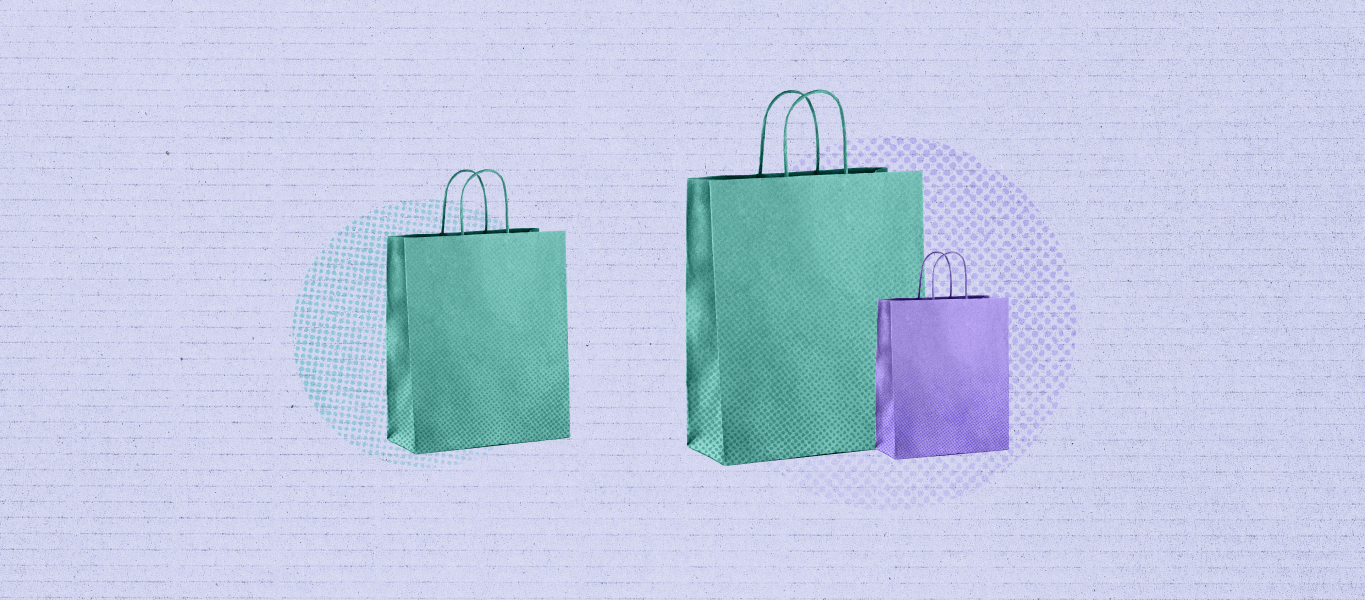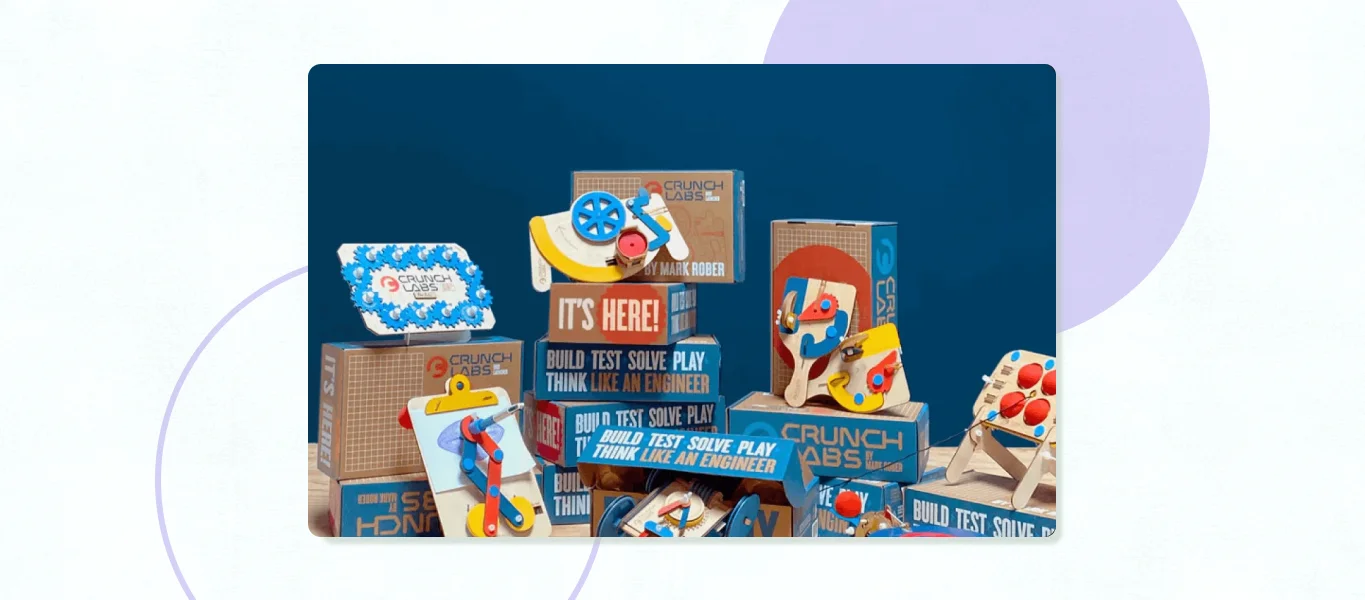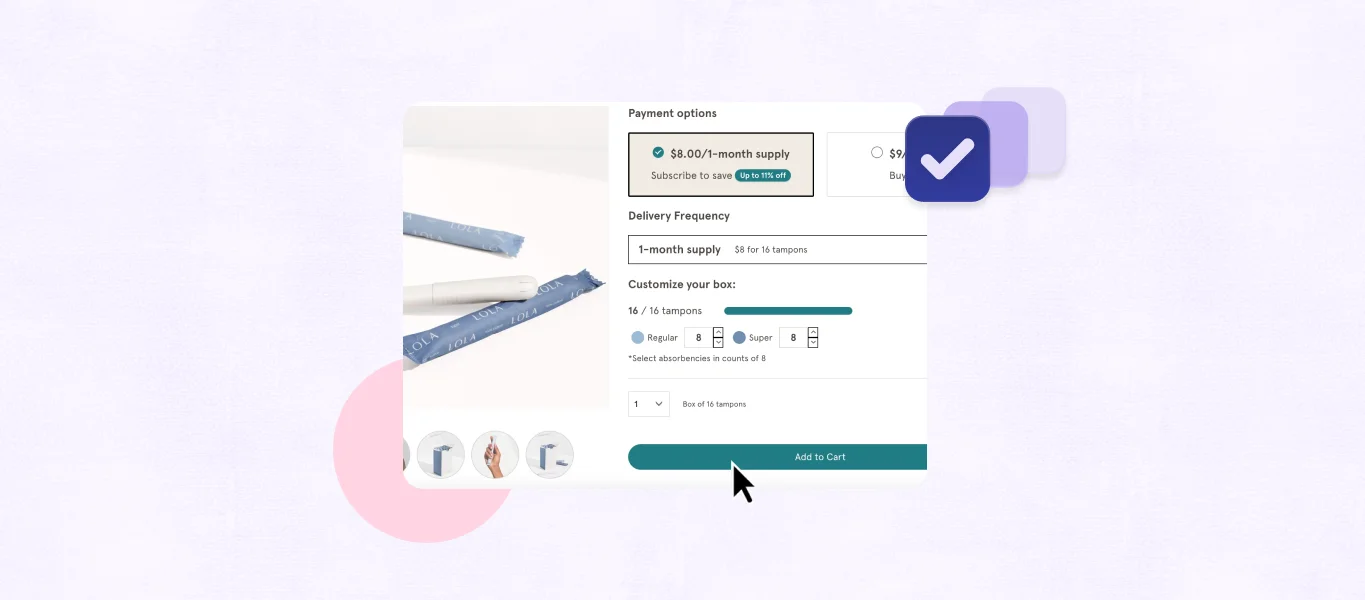By Grace Everitt, Creative Director, Tako Agency
So, you want to grow your business. (Ta, don’t we all.) There are about a billion different ways to do that, of course — advertising, strategic partnerships, referral and loyalty programs, acquisitions…but one of the easiest wins is a well-thought approach to sales: specifically, cross-sells and upsells.
In this article, we’ll discuss what cross-sells and upsells are, strategies to use them effectively, actionable ideas you can implement, and where to use these strategies most efficiently in a subscription-based business.
First of all, what are cross-sells and upsells?
In simplest terms, cross-selling is making customers aware of products that would add value to their purchase (like a one-time product) that they hadn’t intended to purchase but “Hey, now that you mention it…”
For a subscription business, this might mean spotting an opportunity to offer customers items that complement their subscription, or offering a second subscription that ties into their interests.
“Loving your subscription to the Happy Paws Yummy Food Club? Add our Bowl of the Month subscription and surprise Pongo with a new bowl every month for just $7!”
Upselling, on the other hand, is about making personalized recommendations that influence subscribers toward a product similar to the one they think they want, but possibly offers more benefits at a higher price. (Personalized is the key word there, friends; more on that in a minute.)
“Loving your subscription but looking for something more sophisticated for Perdita’s persnickety palate? Upgrade to our new Chef’s Kiss Gourmet subscription, which uses only all-natural, organic, GMO-free ingredients and features luxury proteins like lamb and duck for only $20 more per month.”
In other words, upselling is about switching out the good for the great. It works best with existing customers who already have confidence in your brand/products and the budget to spring for an upgrade.
Upselling is widely considered more profitable than cross-selling, with one survey finding a 20% upsell conversion rate compared to an average conversion rate of 4.3%.
It’s not all about the money
For most businesses, the primary focus and purpose of cross-selling/ upselling is to boost your average order value (AOV) and thus your revenue…but we find it’s more effective to come at it from an angle that will be more meaningful to your customer.
Zoom out a bit to look at your business as a whole. Why does it exist? How are you improving the customer’s life? Is it by solving a problem? Meeting a need? Providing joy?
Good marketing and sales is the art of connecting people with products and services that add value to their lives. It is not about shouting “BUY ME, BUY ME” anymore. The same principle should apply to upselling and cross-selling. Using a “How can I make them spend more money?” approach won’t get you far in an era when authenticity is so highly valued.
Instead, take a peek through your customer’s eyes: “What else do I offer that would make this purchase even more valuable/helpful/joy-providing? If they’re happy with Product X, what else do I offer that could make them even happier?”
Why cross-sells and upsells are important for subscription businesses
Depending on the nature of the product and/or type of subscription model, there’s a chance that the relationship between your customer and your brand may become stale over time.
Replenishment models face this challenge more often than curation or access models. Products are predictable and useful, but perhaps no longer exciting or particularly noteworthy. When the customer relationship stagnates, the risk for cancellation increases.
Curation and access-based subscription businesses are less likely to run into this sluggishness because, by the very nature of their model, product offerings are constantly changing and, therefore, new and exciting.
That said, when done right, cross-sells and upsells achieve goals relevant to all models:
- increased average order value (AOV)
- a deeper customer relationship
- more awareness of and engagement with your brand
- making the perfect match between product and customer (and improving the customer experience overall)
Beyond the various models, subscription companies generally have higher rates of returning customers that non-subscription businesses– and according to Invespcro:
“Statistics suggest the probability of selling to a current customer is 60 to 70% compared to 5 to 20% for a new customer.”
With new customer acquisitions costing five times more on average than retaining an existing one, it behooves you to focus on increasing the lifetime value of a single customer — and keeping them delighted — rather than constantly chasing new ones. Cross-sells and upsells can help achieve that.
Personalization is key
As a subscription-based business, you’re uniquely positioned to create a sustainable, positive, and profitable relationship with your customers. Personalization is a critical part of that process in a number of areas, but certainly in the sales process. Accenture tells us that giving current customers personalized product recommendations “makes them 58% more likely to buy.”
When thoughtfully personalized, cross-sells and upsells can function as love notes: I know you, I’m thinking of you, and I want you to have the things that make you happy. They keep customers engaged with your brand, making them less likely to want to quit you.
By learning to understand who your subscribers are, how they use your products, and why (and noticing, too, where their sticking points are), you become a very real partner in their quest for improved quality of life, reducing friction between them and the things they want and need.
Popular cross-selling/upselling strategies
Trying to go beyond slapping on a standard “Other Products You May Like” section and hoping for the best? Here are some tried-and-true strategies and ideas for effective cross-sells and upsells.
- Unbundle the bundle
- If you sell a “beauty bundle” consisting of 2 sets of false lashes, glue, and eyeliner, consider offering those items as stand-alone add-ons in a “You May Also Need…” section on the cart page.
- If you sell a “beauty bundle” consisting of 2 sets of false lashes, glue, and eyeliner, consider offering those items as stand-alone add-ons in a “You May Also Need…” section on the cart page.
- Foresee the customer’s needs
- Let’s say I’m brand new to false lashes — no real clue what I’m doing. I might not know that I need lash glue to adhere them! It’ll be a bad customer experience for me if my lashes arrive and I realize they aren’t even usable yet. As the merchant, try to foresee things the customer might not know about or forget, and connect the dots for them.
- Let’s say I’m brand new to false lashes — no real clue what I’m doing. I might not know that I need lash glue to adhere them! It’ll be a bad customer experience for me if my lashes arrive and I realize they aren’t even usable yet. As the merchant, try to foresee things the customer might not know about or forget, and connect the dots for them.
- Apply basic consumer behavior tactics (the oldies but goodies)
- The urgency principle (“The clock is ticking–this discount expires in 48 hours!”)
- The exclusivity principle (“Available only for our Luxe Level members!”)
- The scarcity principle (“Grab this month’s box add-on before it’s gone — only 200 in stock!”)
There’s no need to be heavy-handed with these kinds of tactics, but they do work!
Cross-selling/upselling on the product page
The product page is generally the most obvious place for a cross-sell opportunity, specifically. Customers have come to expect an “Other Products You May Like” section on this page as de rigeur.
As a result, they may be blind to it — so while it’s worth implementing something on the product page, try to approach it with thought. FOr instance, make sure that the products showing up in that recommendation section are actually related to what the user is viewing, and not just random. You might also want to consider a different title for the section, like “Frequently Bought Together”, which has a stronger whiff of suggestion to it.
To increase AOV in general, consider offering a free gift to first time shoppers with a purchase of $X, or a discount code of increasing value at various total purchase thresholds–both of which can be prominently advertised on the product page and elsewhere.
Cross-selling/upselling in the checkout journey
For this example, the checkout journey consists of three main phases:
- the cart page
- any app-driven, on-site, post-checkout upsell
- the follow-up email marketing (such as a bounceback campaign)
A customized cart page is a fantastic opportunity for either a cross-sell (such as add-ons or related accessories) or an upsell (“Upgrade to our Premier Whiskey Club for only $17 more per month!”). It’s the only part of the checkout journey that’s standard for all merchants, so if you’re not using apps or email marketing, this is your last chance to make another sale.
In the second (optional) phase, apps such as One Click Upsell are triggered after the checkout process is complete, and prompt users to make a second purchase right away (or add to their existing order).
Typically the item offered here is leveraging the urgency principle in combination with a discount (“Only 20 minutes to claim this deal!”) or exclusivity (“Snag our most elusive shade of Queen Bee Lipstick, Mythos Mama, right here — available nowhere else in stores or on-site.”)

The emails triggered in connection with a checkout are the final opportunity for a gentle upsell or cross-sell. While it’s verboten to include marketing content in transactional emails, bounceback flows and customer thank you flows are both fair game.
Cross-selling & upselling in the Recharge customer portal
Existing subscribers (which, as we’ve already established, are much easier to sell to than brand new ones) will spend most of their time interacting with your brand by way of their customer portal. Recharge plays nicely with Shopify right out of the box, obviously, but its robust suite of customization options for the customer portal is where things get really good.
(Check out this interview with Recharge COO Chathri Ali for a deeper understanding of just how important the customer portal is.)
Consistent branding experience
Lack of branding consistency across platforms impacts customer confidence, and — need we say it — not in a good way. From the Tako Stand blog:
“Branding might not seem like a big deal, but from your website to your products, digital marketing campaigns to hang tags, you’ve thoughtfully crafted a beautiful, cohesive brand identity. (If you haven’t, you should get someone to help you out.) To do all of that, then fail to present the same UX/UI to your customers in the very place they’ll spend the most time, is like renovating your entire house but leaving a gaping hole in the living room floor.”
Unfamiliarity creates friction. Familiarity builds trust.
Customer autonomy
Customers with choices and some control over their experience with you are happy customers.
When you give them more autonomy and management of their subscription, they are more likely to spend time in the portal doing so — and voila, there are your opportunities to upsell and cross-sell.
Customizing the Recharge customer portal to leverage cross-selling & upselling
There’s so much you can do to add sales opportunities to your customer portal in an organic, exciting way. Consider:
Add-ons
Give your customers a reason to log in to their customer portal each month with One Time Purchases. Add-ons are a great way to increase AOV, beta-test new products with existing subscribers, or move stagnant inventory at a discount. For maximum effectiveness, use the scarcity principle here (“Grab this month’s box add-on before it’s gone — only 200 in stock!”) and try to offer something new each month.
Swaps
Another easy way to encourage logging in: give customers the ability to swap an aspect of their delivery that month. If you sell curated beauty boxes, for example, give the customer a choice between a lipstick, a mascara, and a nail polish for one of their 5 items. This approach gives the customer a feeling of involvement, choice, and personalization.
Upgrades
This is easy: give subscribers an opportunity to upgrade all or part of their subscription. In a replenishment model, for example, offer an option to upgrade from the 16 oz bottle to the 24 oz bottle (at a slightly lower price than the standard 24 oz bottle).
Product recommendation quizzes
Yup, you can do this right in the customer portal. “Discover something new and exciting” quizzes not only return useful product recommendations to the customer, but also function as a valuable data collection tool for the merchant!
Solid email marketing strategy and execution is an important piece of the puzzle when implementing most of these strategies, so it’ll be important to make sure you’ve got that covered, too — but that’s for another day!
So, now what?
Well, now you’re off to the races with cross-selling & upselling! We went over a lot of different opportunities here, and some are a little bit more complex to implement than others.
Start small with one or two ideas and grow from there. Remember to approach your sales efforts with a “How can I make the customer even happier/give them an even better experience?” mindset instead of only seeing $$$. Use analytics and reporting tools to pay attention to any notable changes in customer behavior, and leverage what’s working best.
Happy selling!
Click here to learn more about Tako Agency.



